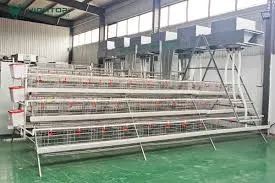Belt-Driven Exhaust Fan for Enhanced Ventilation and Airflow Solutions
Dec . 14, 2024 09:25 Back to list
Belt-Driven Exhaust Fan for Enhanced Ventilation and Airflow Solutions
Understanding Belt Driven Exhaust Fans Efficiency and Application
In today’s industrial and commercial environments, the importance of proper ventilation cannot be overstated. The effectiveness of air movement within a facility influences not only employee comfort but also the operational efficiency of machinery and equipment. Central to achieving an optimal air movement solution is the belt driven exhaust fan, renowned for its efficiency and adaptability to various applications.
What is a Belt Driven Exhaust Fan?
A belt driven exhaust fan is a mechanical device designed to extract air from a room, building, or industrial space, typically serving as a part of a ventilation system. Unlike direct drive fans that have their motors connected directly to the fan shaft, belt driven fans utilize a belt to connect the motor to the fan. This configuration allows for a range of advantages, such as adjustable fan speeds and greater flexibility in placement.
Advantages of Belt Driven Exhaust Fans
1. Energy Efficiency One of the primary benefits of belt driven exhaust fans is their enhanced energy efficiency. The ability to use variable speed drives enables facilities to regulate the fan speed according to real-time needs. This adaptability significantly reduces energy consumption, especially in applications where air movement requirements fluctuate.
2. Quiet Operation Due to their design, belt driven fans often operate more quietly compared to direct drive fans. The belt helps to dampen vibrations and noise produced by the motor. This is particularly beneficial in settings where noise reduction is critical, such as in schools, offices, or hospitals.
3. Maintenance and Repair Belt driven systems are generally easier to maintain and repair. If the motor fails, it can be replaced without needing to disturb the entire fan assembly. Additionally, belts can be replaced at a lower cost compared to the entire fan unit, allowing for economical maintenance practices.
4. Versatility in Applications Belt driven exhaust fans can be used in a wide range of applications, from agricultural settings, like barns or greenhouses, to industrial environments that require the removal of fumes, dust, or heat. Their flexibility in size, design, and capacity makes them suitable for both residential and commercial tasks.
belt driven exhaust fan

How Do They Work?
Belt driven exhaust fans consist of several key components the motor, belts, pulleys, and the fan blade itself. The motor is typically mounted on a shelf or platform that is isolated from the vibration of the fan. This isolation helps in noise reduction. The motor rotates a pulley, which, through the belt, drives another pulley connected to the fan blade.
By adjusting the size of the pulleys, operators can alter the fan's rotational speed, providing a way to control airflow rates according to specific ventilation requirements. This feature is particularly advantageous in manufacturing settings where different processes require varying levels of exhaust.
Installation Considerations
When installing a belt driven exhaust fan, several factors warrant consideration
1. Positioning Correct placement of the fan is crucial for effective airflow. Fans should be strategically located to optimize exhaust and intake air movement. 2. Ductwork Efficient ductwork design affects fan performance. Proper sizing and layout help minimize air resistance, thus enhancing efficiency. 3. Motor Size Selecting the appropriate motor size is key to achieving the desired airflow rate without unnecessary energy expenditure.
4. Environmental Conditions Consideration should be given to the operating environment. For example, corrosive or high-temperature environments may require specialized materials and designs to ensure longevity and reliability.
Conclusion
Belt driven exhaust fans offer a robust solution for effective ventilation in various settings. Their energy efficiency, quiet operation, ease of maintenance, and adaptability make them an excellent choice for both industrial and commercial applications. Understanding their components and functionality can empower facility managers to implement effective ventilation strategies that promote a safer and more comfortable working environment. With proper installation and maintenance, these fans can significantly enhance air quality and operational effectiveness, making them a worthy investment for any facility.
-
Automatic Feeding Line System-Pan Feeder Nipple Drinker|Anping County Yize Metal Products Co., Ltd.
NewsJul.29,2025
-
Hot Sale 24 & 18 Door Rabbit Cages - Premium Breeding Solutions
NewsJul.25,2025
-
Automatic Feeding Line System Pan Feeder Nipple Drinker - Anping County Yize Metal Products Co., Ltd.
NewsJul.21,2025
-
Automatic Feeding Line System Pan Feeder Nipple Drinker - Anping County Yize Metal Products Co., Ltd.
NewsJul.21,2025
-
Automatic Feeding Line System - Anping Yize | Precision & Nipple
NewsJul.21,2025
-
Automatic Feeding Line System - Anping Yize | Precision & Nipple
NewsJul.21,2025






